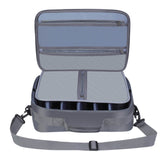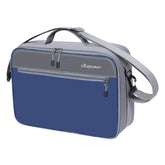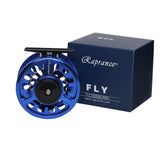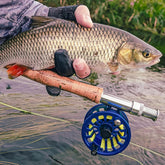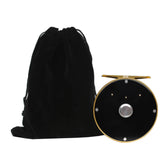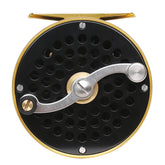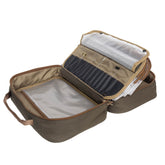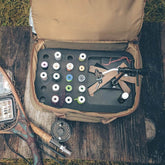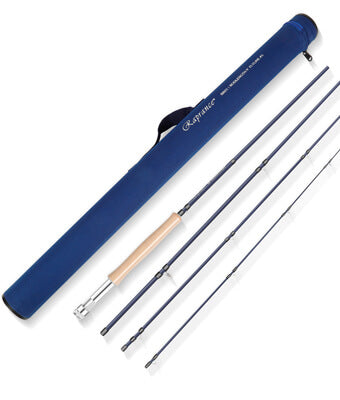Fly Line Comparison: Switch Lines vs Scandi Heads for Steelhead Fishing
When it comes to targeting steelhead and salmon, choosing the right fly line is crucial for success. Switch fly lines offer versatility for both single-hand rods and switch rods, making them ideal when I need to adapt my casting techniques on the water. Scandi heads, on the other hand, excel in delivering delicate presentations, especially in quieter waters where precision matters.

Understanding when to use a switch line versus a Spey line can significantly impact my fishing experience. Switch lines work well in varied conditions, while Spey lines are better suited for larger waters and longer casts. Each has its strengths depending on the scenario I face.
As I compare integrated switch lines with shooting heads, I find that integrated lines offer a streamlined approach for ease of use, while shooting heads provide flexibility with line length and weight adjustments. This decision often depends on my specific fishing style and the environments I encounter while pursuing steelhead and salmon.
Understanding Fly Lines and Rods
In fly fishing, selecting the right line and rod combination is crucial for effective casting and targeting species like steelhead. I will clarify important aspects of fly lines, the differences between rods, and how various line types apply to specific fishing situations.
Fly Line Fundamentals
Fly lines are essential tools in the caster's arsenal. They come in various styles and designs tailored for different fishing scenarios.
-
Grain Weight: This determines the line's weight, impacting casting performance. For example, a line's grain weight must fall within the "grain window" for optimal rod performance.
-
Integrated Lines vs. Shooting Heads: Integrated lines feature a continuous design, while shooting heads consist of a separate head and running line. Each has its advantages depending on the casting style and distance required.
-
Types of Fly Lines: Common types include floating, sinking, and intermediate lines. Each type serves specific conditions and targets.
Spey Rods vs. Switch Rods
Choosing between a Spey rod and a switch rod depends on the fishing technique and personal preference.
-
Spey Rod: Typically longer and designed for double-handed casting techniques, Spey rods excel in larger rivers and windy conditions. They are used primarily with Skagit or Scandi lines.
-
Switch Rod: These rods bridge the gap between single-handed and two-handed casting. They offer versatility for both overhead and Spey casts, making them effective for smaller waters or when a quick change is needed.
In terms of length, switch rods are usually shorter, allowing for easier maneuverability while still providing ample leverage.
Line Types and Applications
Understanding line types can enhance my effectiveness on the water.
-
Skagit Head: This is ideal for casting heavy flies or when fishing in fast-moving water. The abbreviated head allows for quick loading and powerful casts.
-
Scandi Line: This line type is suited for delicate presentations, especially in clear water when targeting spooky fish. It allows for longer casts with lighter flies.
The choice of line significantly affects my distance and accuracy. Adjusting the fly line based on rod type and fishing environment is essential for success.
Fly Line and Rod Selection for Steelhead
Choosing the right fly line and rod is crucial for targeting steelhead effectively. The type of line and rod can significantly impact your success, depending on seasonal factors and specific fishing conditions. My experience has shown that understanding the nuances between line types is essential.
Switch Fly Lines vs. Scandi Heads for Steelhead
Switch fly lines and Scandi heads serve different purposes when targeting steelhead. I typically use switch fly lines when I need versatility in casting and a range of sink tips. These lines provide a good balance for casting short and long distances, making them great for varied water conditions.
On the other hand, Scandi heads excel in delicate presentations. They allow for smooth, controlled casts, especially when using lightweight flies. Scandi lines are particularly effective in clear water situations or when fish are wary. My preference often shifts to Scandi heads during summer months when steelhead are more active and feeding.
When to Use a Switch Line vs. a Spey Line
The decision between a switch line and a Spey line comes down to rod length and fishing technique. With switch rods, I enjoy the flexibility of using both single-handed and two-handed casting styles. This versatility is beneficial in tighter spaces or when quick adjustments are needed.
In contrast, Spey lines shine in open water and larger rivers. They allow longer casts and the ability to manage heavy tips, which is ideal for winter steelhead. If I’m targeting deep pools, Spey lines with sink tips are often my go-to, as they help get my fly down quickly.
Optimizing for Seasonal Steelhead Varieties
Seasonal variations directly influence my fly line and rod choices. Winter steelhead often require different strategies than summer steelhead. During winter, I lean towards Skagit lines with heavy sink tips to reach deeper depths. The heavier setup helps navigate cold, fast-flowing water.
In summer months, I choose lighter lines and floating tips, using Scandi heads for a more delicate approach. This method helps in effective presentations when fish are actively feeding. Adjusting my line and rod selection based on the steelhead's life cycle has consistently improved my fishing success throughout the year.
Advanced Casting Techniques and Tips

Understanding advanced casting techniques significantly enhances your fishing experience. Mastering various casts tailored for different rods allows for better accuracy and efficiency when targeting steelhead.
Mastering Spey Casting
Spey casting is essential for using two-handed rods. I prefer the snake roll cast and single-hand casting techniques for their versatility. The snake roll allows for smooth transitions and minimal false casts, which are crucial when facing tight quarters.
Practicing the casting stroke is vital. A smooth, consistent stroke helps maintain the line's energy. I focus on my back cast, ensuring it's high enough to build the necessary tension. Engaging the body's core during the cast provides more power and control, leading to longer casts without excessive effort.
Adapting Casting for Switch and Spey Rods
Switch rods offer adaptability that allows me to utilize both overhead and Spey techniques. When using a switch rod, I often combine techniques, depending on the situation. The roll cast is particularly useful in limited space, creating minimal splash and disturbance.
I find adjusting my stance and grip key for maximizing efficiency. A wider stance can enhance balance during the cast. Additionally, focusing on line management helps prevent tangles during complex casts. Practice is essential; refining my technique through repetition leads to more successful days on the water.
Equipment Integration and Selection
In choosing the right equipment for steelhead fishing, I find it essential to consider the balance and functionality of integrated switch lines versus shooting heads, as well as the customization of line and tip setups for optimal performance.
Integrated Switch Lines vs. Shooting Heads
Integrated switch lines provide a seamless connection between the fly line and leader, simplifying rigging. This type of line often includes built-in taper, which aids in casting and helps deliver the fly more accurately. Their convenience is appealing for quick changes and easy handling.
Shooting heads, on the other hand, offer versatility through interchangeable heads and lines. I can select the appropriate head for varying conditions, whether I need a sink tip for deeper pools or a floating line for surface presentations. By using a shooting line, I benefit from increased distance and casting accuracy.
Customizing Line and Tip Setups
When customizing line setups, I consider several components to achieve the right drift and depth. For tippets, I prefer using a tapered leader that transitions smoothly to a stronger section, enhancing turnover. The addition of a polyleader or versileader allows me to adjust the sinking rate easily.
For varying water conditions, employing sink tips or MOW tips provides adaptability. These tips allow me to fish at different depths without switching my entire line setup. Pairing the chosen line with the correct backing ensures I have enough capacity for long runs, while a well-matched reel facilitates smooth retrieves.

